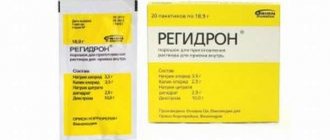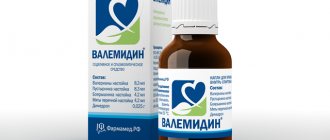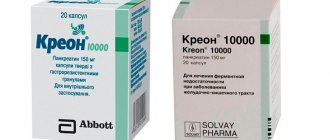Description
The drug in question has high antibacterial activity and is antiprotozoal. It is a derivative of 5-nitromidazole. Available in the form of white tablets with a yellowish tint. Those who have infections of a bacterial nature need to undergo a course of treatment with Trichopolum. This drug has a wide spectrum of action and an increased level of bioavailability.
Trichopolum does have side effects, but you must follow the instructions and dosage regimen to minimize them. The peculiarity is that it is prescribed not only to women for gynecological diseases of an infectious nature, but also to men for pancreatitis. The medicine stops the process of inflammation in the pancreas, and if it is taken with other medications, it is most effective.
Indications
What is Trichopolum prescribed for? The main cause is infectious and inflammatory diseases that are caused by microorganisms sensitive to the drug.
- Bacterial vaginosis.
- Trichomoniasis.
- Amoebiasis.
- Giardiasis.
- Ulcerative gingivitis, odontogenic infections.
"Trichopol" is prescribed for anaerobic bacterial infections, gynecological, abluminal, sepsis, bacteremia, infections of joints and bones, soft tissues, skin, respiratory tract infections. Trichopolum is also used to treat Helicobacter pylori for stomach and duodenal ulcers. The drug is used for prophylaxis before surgeries on the genitals and gastrointestinal tract. “Trichopol” is especially effective for bacterial vaginosis, giardiasis, trichomoniasis, and anaerobic infections.
In the case of pancreatitis, Trichopolum is used to eliminate the bacterium Helicobacter pylori, which infects the stomach area, damages the mucous membrane, and causes various inflammatory processes. As a result of such damage, gastrointestinal diseases such as gastritis and ulcers can occur. Trichopolum is often prescribed after operations performed on the gastrointestinal tract, as this prevents the formation of complications.
In what cases should women consult a gynecologist? Since Trichopolum is used to treat sexually transmitted infections, in case of burning, itching in the vagina, purulent discharge, nagging pain in the lower abdomen and other unpleasant symptoms, you should visit a specialist. Trichomoniasis and vaginitis can cause serious consequences, including infertility. During treatment with Trichopolum, sexual rest should be observed. Both partners usually undergo therapy. After treatment, sexual intercourse should be protected.
Efficacy in trichomoniasis
Indications for the use of the drug "Trichopol" include diseases such as trichomoniasis, gonorrhea and chlamydia.
It often helps women in the systemic treatment of asymptomatic and symptomatic trichomoniasis, and is used to prevent the development of the disease in a partner.
It is important to know! For preventive purposes, it is recommended to take the drug even if the partner’s test result is negative.
Instructions for use
"Trichopol" is produced in the form of tablets for men and vaginal suppositories for women. In the second case, the tablet candle is freed from the contour cell and moistened with cooled boiled water. For trichomonas vaginitis, one tablet is inserted into the vagina, the course of therapy is seven days. For nonspecific vaginitis and bacterial vaginosis, one vaginal tablet is used per day for a week. It is allowed to combine the drug with oral tablets. The course of treatment is ten days, maximum repeated two to three times a year. If Trichopolum is used to treat trichomonas vaginitis in women and urethritis in men, sexual activity should be stopped for the duration of therapy.
For bacterial vaginosis, adults are recommended to take 500 mg - two tablets twice a day after meals for seven days. For trichomoniasis - 500 mg: two tablets twice a day for a week. This is the standard scheme. In each individual case, individual therapy for the diseases listed above is prescribed. For example, for pancreatitis in men, the daily dosage is 0.5 g, for exacerbation of the disease - 500 mg three times a day. The course of taking Trichopolum is individual.
Compound
Trichopolum vaginal tablets contain the active ingredient metronidazole + excipients: cellulose, povidone, crospovidone, silicon dioxide and stearic acid.
Oral tablets contain metronidazole + excipients: magnesium stearate, starch, molasses, gelatin.
The infusion solution contains metronidazole + excipients: citric acid monohydrate, sodium chloride, sodium hydrogen phosphate and water.
Contraindications
In what cases is Trichopolum contraindicated for use?
- Individual intolerance to the active substance - metronidazole, any of its derivatives.
- Organic lesions of the central nervous system.
- Leukopenia.
- Liver diseases, including chronic failure.
- First trimester of pregnancy.
- Breastfeeding period.
- Children under three years of age.
It is allowed to prescribe Trichopolum in the second and third trimesters of pregnancy if the benefit to the mother outweighs the harm to the fetus. Metronidazole is able to cross the placenta. An overdose of Trichopolum causes increased side effects. The most common symptoms are nausea, vomiting, dizziness, and body weakness. If metronidazole poisoning occurs, symptomatic treatment is prescribed.
Pharmacological properties of the drug Trichopolum
Pharmacodynamics . Metronidazole is a 5-nitroimidazole derivative that has antiprotozoal and antibacterial effects. Mechanism of action . Metronidazole easily penetrates into single-celled organisms, protozoa and bacteria and does not penetrate mammalian cells. The redox potential of metronidazole is lower than that of feredoxin, an electron transport protein. This protein is found in anaerobic and aerobic microorganisms. The potential difference reduces the nitro group of metronidazole. The reduced form of metronidazole is capable of damaging the DNA chain of these organisms. Metronidazole is active against Trichomonas vaginalis, Giardia lamblia, Entamoeba histolytica and Balantidium coli . It also has a strong bactericidal effect against the following anaerobic bacteria: gram-negative bacilli: Bacteroides species , including the Bacteroides fragilis group (B. fragilis, B. distasonis, B. ovatus, B. thetaiotaomicron, B. vulgatus), Fusobacterium species; gram-positive rods: Eubacterium, Clostridium; gram-positive cocci: Peptococcus species, Peptostreptococcus species. Metronidazole does not have a bactericidal effect against most aerobic and partially anaerobic bacteria, fungi and viruses. Pharmacokinetics . Suction . Metronidazole is easily absorbed from the gastrointestinal tract (minimum 80%). After vaginal administration, a small amount is absorbed. After administration of the drug at a dose of 250, 500 mg or 2 g by healthy volunteers, its maximum concentration in blood plasma over 1–3 hours was 4.6–6.5 μg/mol, 11.5–13 μg/mol and 30–45 µg/mol, respectively. Simultaneous ingestion of food reduces the rate of absorption and the maximum concentration of metronidazole in the blood plasma. About 20% of metronidazole is bound to plasma proteins. Distribution . Metronidazole is distributed in many tissues and body fluids, including bile, bone tissue, saliva, peritoneal fluid, vaginal secretions, seminal fluid, CSF, brain tissue and liver. Penetrates the placental barrier and is detected in breast milk in a concentration that is practically no different from that in blood plasma. The half-life of metronidazole in adults without liver and kidney dysfunction is 6–8 hours. In case of liver dysfunction, the half-life of metronidazole may increase. Biotransformation . On average, 30–60% of metronidazole taken orally is metabolized in the liver by hydroxylation, oxidation and conjugation with glucuronic acid. The main metabolite, 2-hydroxymetronidazole, also has antibacterial and antiprotozoal effects. Removal . Metronidazole and its metabolites are excreted mainly in the urine (60–80%); Only 6–15% of the administered dose is excreted in feces. The renal clearance of the drug is 70–100 ml/min. Urine may be dark or acquire a red-brown color due to the presence of water-soluble dyes, which are products of the biotransformation of the drug. A few studies show that renal excretion of metronidazole is reduced in elderly patients. Metronidazole is eliminated from the body by hemodialysis, while peritoneal dialysis is ineffective.
Side effects in women
If you take the medicine as prescribed, there is still a chance of unwanted reactions. What side effects does Trichopolum cause in women? The list is very long. The digestive, central, nervous, urinary, reproductive, musculoskeletal, and hematopoietic systems may suffer. What do women celebrate?
- Nausea and vomiting.
- Diarrhea, constipation.
- Intestinal colic.
- Unpleasant taste in the mouth.
- Problems with gums.
- Headaches, dizziness.
- Excitability.
- Depression.
- Sleep problems.
- Confusion.
- Urinary incontinence.
- Unpleasant discharge after Trichopolum.
There may be development of fungal flora in the vagina, pain in it, and candidiasis. Allergic reactions, rash, urticaria, and fever also occur. Itching in the intimate area is often observed after Trichopolum. If unpleasant symptoms occur, you should tell your doctor about it.
Side effects in men
"Trichopol" (tablets) are also taken for pancreatitis. If you read the instructions, you can find out what unwanted reactions occur. These include:
- jaundice;
- nausea, vomiting;
- colic in the abdomen;
- loss of appetite;
- dry mouth;
- anorexia.
Allergic reactions to the skin and disturbances in the functioning of the musculoskeletal system often occur. "Trichopol" is not recommended for those men who have been diagnosed with diseases of the central nervous system, epilepsy, and liver pathologies. Symptoms of overdose include nausea, vomiting, loss of coordination, convulsions, and neuralgia.
Side effects from Trichopolum may occur if the medicine is taken together with other drugs. Thus, the active substance metronidazole enhances the effect of anticoagulants, so the dosage of medications is reduced. Cytemidine inhibits the active substance, leading to undesirable reactions. Antibiotics enhance the effect of Trichopolum, barbiturates reduce it. If you combine the drug with alcohol, you may experience vomiting and dizziness, a decrease in blood pressure, tachycardia, and a feeling of fear. "Trichopol" affects the control of vehicles and other mechanisms, that is, it reduces concentration.
Interactions of the drug Trichopolum
Metronidazole can potentiate the effect of indirect anticoagulants (coumarin derivatives) and prolong prothrombin time, so the doses of these drugs should be adjusted accordingly. Inducers of microsomal liver enzymes (phenytoin, phenobarbital, etc.) accelerate the metabolism of metronidazole, which leads to a decrease in its concentration in the blood plasma; microsomal enzyme inhibitors (in particular cimetidine) may prolong the half-life of metronidazole. Metronidazole increases the concentration of lithium in the blood plasma and enhances its toxic effect. If simultaneous use of lithium preparations is necessary, the level of lithium as well as creatinine in the blood plasma should be monitored during treatment. Metronidazole can interact with terfenadine and astemizole, causing undesirable symptoms from the cardiovascular system ( QT on the ECG, arrhythmia, etc.). Drinking alcohol during treatment with metronidazole can cause the development of disulfiram-like reactions (feeling hot, sweating, headache, nausea, vomiting, pain in the epigastric region, etc.). Metronidazole can increase the toxic effects of disulfiram (disorientation, acute psychosis), so treatment with metronidazole can be prescribed only 2 weeks after stopping disulfiram. Drug interactions have been noted when using metronidazole with bisulfan. Metronidazole is an inhibitor of cytochrome P450 3A4 (CYP 3A4) and therefore can slow down the biotransformation of drugs metabolized by this enzyme. Metronidazole reduces the clearance of fluorouracil and, therefore, can increase its toxicity.
Analogs
Is it worth replacing Trichopolum with other drugs similar to this? The objective advantages of the drug in question include high bioavailability compared to similar medications. Trichopolum quickly reaches a high concentration in the body, so the effect of treatment occurs faster. In addition, it is produced in several forms: tablets, suppositories, solution for intravenous administration.
Analogues of Trichopolum include the following drugs:
- "Metronidazole";
- "Orvagil";
- "Trichobrol";
- "Klion";
- "Metron";
- "Efloran";
- "Metrogil";
- "Rozamet";
- "Deflamon".
For example, Metronidazole has the same benefits as Trichopolum, but it is also available in the form of a gel and cream for external use. However, compared to other analogues, Metronidazole has low bioavailability. The cream effectively treats acne, pimples, erythema, and various inflammatory processes. Apply the cream in a thin layer to damaged skin twice a day and rub in with light movements. The course of such treatment ranges from two to four months.
Reviews
Is it worth buying Trichopolum? This drug has side effects, because it is a fairly serious antimicrobial drug. As those who have used it note, Trichopolum really helps, and it’s inexpensive. It is easy to buy at the pharmacy and convenient to take. The medicine in question has a wide spectrum of action, is suitable for both women and men, and is sold in different forms. The medicine quickly relieves acute symptoms and inflammation. The composition of this product is also an advantage. Many note that it really treats sexually transmitted infections in a complex, is antimicrobial and antimicrobial. Kills harmful microorganisms, ideal for the treatment of gardnerellosis.
However, this drug has many disadvantages. As patients note, the tablets have an unpleasant taste, serious side effects occur, and have a number of contraindications for use. During the course of treatment with Trichopolum you should not drink alcohol; after taking it you may experience dizziness, headache, weakness, nausea, and confusion. Negatively affects intestinal microflora and is an antibiotic. Some indicate that absent-mindedness may occur after taking it, the medicine inhibits the central nervous system, and is contraindicated during pregnancy. Often there is a burning sensation in the vagina after Trichopolum. This medicine should only be prescribed by a doctor after consultation.
special instructions
During the course of therapy, you should refrain from even minimal alcohol consumption. When treating trichomonas infections of the genital organs, you must stop sexual activity for the duration of treatment; do not stop therapy during menstruation. The appearance of severe neurological symptoms while taking the drug is an indication for its discontinuation. If pathological changes in the blood occur, the advisability of using Trichopolum should be reconsidered (taking into account the risk of infection and the risk of complications). If it is necessary to prescribe the drug during breastfeeding, the latter should be discontinued for the period of treatment.
According to Wikipedia, Trichopolum can be used to treat tomatoes and spray plants.
So, to treat tomatoes, it is enough to dilute 20 tablets of the drug in 10 liters of water and spray the plants once every 10 days. Thus, Trichopolum helps to cope with late blight on tomatoes.
Treatment of cucumbers against late blight is carried out in a similar way.
The medication is also prescribed for the treatment of trichomoniasis in chickens.










